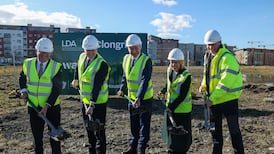How safe is David Cameron as leader of the Tory Party?
As safe as houses, you might think, with the proviso that all political houses tend to be made of straw and sticks.
While Cameron has had setbacks and bruising encounters, his Government is stable and he seems to be in control (sure, the poll figures have dropped but that happens with every Government mid-term).
At the moment, it doesn’t look like there’s anything that will huff and puff enough to blow his house down.
Not if you read the Telegraph and other news organisations that tilt towards the Conservatives, there isn’t. In their narrative, Cameron’s leadership is a ‘hanging chad’ topic, subject of endless discussion, dissection and a bit of conspiratorial theorising. And his obvious successor?
For the Telegraph it's unsurprisingly Boris Johnson, Mayor of London and a star columnist for the paper. Journalistically at least, beneath that shambolic image there is a Rolls Royce engine churning out preternaturally good prose.
But Boris as Tory leader? He is hugely popular in London, but you wonder how his extra-marital affairs and liberal leanings will go down in the Shires. His problem is that of Rudy Giuliani when he sought the Republican presidential nomination - popular in New York and California but without purchase elsewhere.
There seems to be a constant narrative in Britain surrounding leadership, not only Cameron’s but also Ed Milliband’s and Nick Clegg’s.
Here, it is not something that has really featured in a major way for any of the parties since the 2011 election. There is no leader whose position is remotely threatened at the moment. Nor will there be until after the elections next year, and possible not until after the next general election.
It didn’t stop a flurry of stories surrounding Fianna Fail’s Micheál Martin, with some members griping last weekend about cliques in the party and others muttering that there may be a leadership challenge in the offing.
All of this is furlough fantasy from disaffected members, with no strong basis in reality.
As a point of fact, Martin’s leadership seems more stable now than it did in 2011 when he took over a ruined party and he was tainted with the original sin of being a member of the previous government. Since then, questions about the future survival of the party have been settled and Martin seems to have largely overcome the legacy issues.
The last few months have been poor for him, with his failure to take the party along with him on abortion legislation and the bad memories evoked by the publication of the Anglo Irish Bank tapes. The Government's strategically timed banking inquiry will not exactly be of great assistance to him.
But there are very few TDs or Senators in Fianna Fail (and certainly none of the modernisers) who will tell you that his leadership is in doubt or that he is on any kind of probation.
The heir apparent in Fianna Fáil is Michael McGrath, the party's finance spokesman. His relationship with Martin is unusual because they are constituency colleagues in Cork South Central, which is being reduced from a five seater to a four seater ahead of the next election. It would be churlish to say there is not constituency rivalry between them. Does it translate into a tension at party level? Not publicly at least. However, McGrath's decision to openly declare his opposition to the abortion legislation served as a shot across the bows to Martin, although it might not have been intended as such.
The other potential successor is Dara Calleary, the convivial and hard-working TD for Mayo. He is not quite as assured and polished as McGrath but he is popular among colleagues.
Given that the contest is at least a few years away, there are others too who may come into contention - Niall Collins in Limerick and (if it occurs after the next general election), Averill Power and Darragh O'Brien, assuming they both get elected to the Dáil.
In Fine Gael, the leadership contest of June 2010 put paid to any internal rumblings. Enda Kenny has been an incredibly firm leader who has not backed away from taking difficult unpalatable political decisions, most notably on the abortion legislation. Five TDs have lost the whip and there is a younger awkward squad in the parliamentary party, but there is no question surrounding his leadership. It is Dev-like in its solidity for now.
Consequently, a succession race is a medium-term to long-term prospect. As of now, the person most talked about is Simon Coveney, who has had a very good two years as Minister for Agriculture. He has overcome a reputation for being a little ponderous in live debate and, indeed, has put in strong and direct performances when substituting for Kenny when taking leaders' questions in the Dáil.
It's the 30-something and 40-something generation from which Fine Gael will pick its next leader. The other strong contenders are Leo Varadkar and Brian Hayes, though both will have to broaden their appeal.
Lucinda Creighton is another obvious choice but she faces a difficult period outside the parliamentary party fold. Does she keep her head down and do the chicken dinner circuit? Or does she set out critiques of party and government strategy, with the result that she will become the magnet for those disaffected with Kenny?
In Labour, the obvious tension in leadership is between Eamon Gilmore and Joan Burton, who continues to send out a strong line that is independent of the consensus position of the wider coalition and of her own Labour colleagues in government. But she has given no indication that she will launch a challenge of any kind.
The elections next year will be telling. If it is a disaster for Labour (which did really well in 2009) then the conditions may lead to talk of a coup. Alex White has been a very impressive performer since his promotion and is talked about as a possible leadership contender in future. Of its younger generation, many are undoubtedly bright and committed but none has really come to the fore as yet in terms of being an identifiable future possible leader.
In Sinn Féin, there is a big disconnect between the 'inside the beltway' view of Gerry Adams - that he doesn't really get the Dáil or southern politics - and the view among the wider public of him as a strong political brand, leading republican etc. He will be leader as long as he wishes to be leader, just as Martin McGuinness has been in the North.
The difficulty the party may have when these two eventually step down is that it might create a vacuum, as happened with the SDLP after John Hume retired.
In the Republic, Mary Lou McDonald is the obvious replacement, although Pearse Doherty has a very high work rate and growing authority. Unlike other parties, the leader has to command the support of members on both sides of the Border. There may be a question mark around McDonald in that regard.
Meanwhile, watch this space. The Boris Johnson for Taoiseach campaign starts here.









